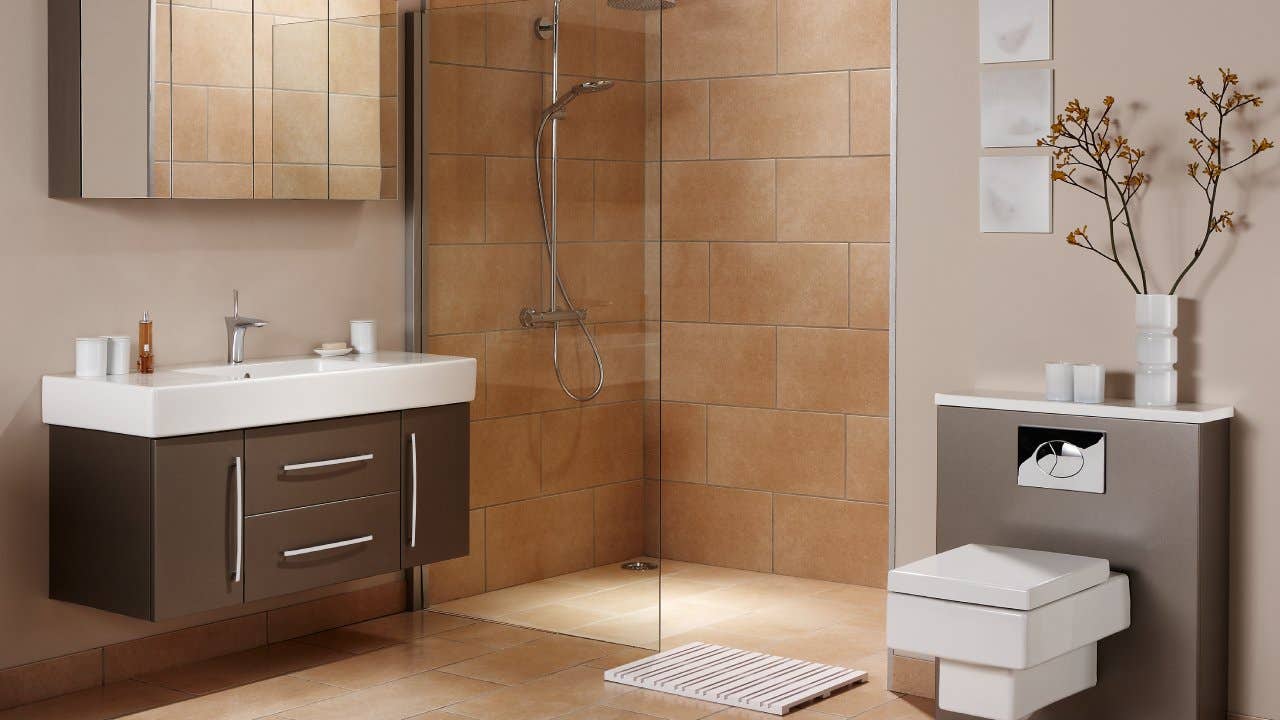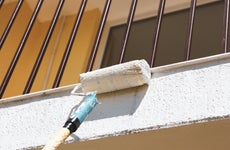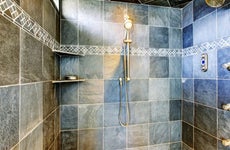How much does it cost to add a bathroom to your home?

The Bankrate promise
At Bankrate we strive to help you make smarter financial decisions. While we adhere to strict , this post may contain references to products from our partners. Here's an explanation for .
You can never have enough bathrooms. Or so most American homeowners think.
Don’t believe us? Over the last few decades, the average number of bathrooms in an U.S. house has gone up from 2.29 (in 1987) to 2.8 in 2020, according to the National Kitchen + Bath Association (NKBA). More than one-third of all single-family homes have three or more baths.
If your home is lagging behind, maybe you should think about a bathroom addition. That, of course, means you need to budget for the cost to add a bathroom to your home.
The range here is fairly sizable, anywhere between $5,000 and $35,000 to convert an existing area, according to Angi, the contractor search service. Breaking it down a bit more, by basic category, “a full bathroom addition to an existing space costs an average of between $7,000 and $12,500,” Adam Graham, industry analyst at Fixr.com, says. “The average cost of a half-bathroom addition is around $3,640 to $6,195.”
Beyond these basics, though, a lot plays into how much your new bathroom will cost. So let’s dive into what you need to know to plan your project.
Factors that affect the cost of adding a bathroom
Type of bathroom
The more your bathroom offers in terms of features and amenities, the more it’s going to cost. “A half bathroom, as you would expect, is a more affordable addition than a full bathroom,” Graham explains. “It involves installing a toilet and sink, with the possible extras of cabinets.”
But actually, there’s a whole pecking order of bathrooms. According to design authorities like Architectural Digest, the average cost to add a bathroom by nuanced type breaks down as follows:
- Half bathroom/powder room (sink, toilet): $3,000–$12,000
- Three-quarter bathroom (with a shower stall): $5,000–$18,000
- Full bathroom (shower and bathtub, vanity and cabinets): $7,000–$30,000
- Primary/master bathroom (with a double vanity or freestanding tub): $20,000–$96,000
Size of bathroom
Size does matter. That overlaps with the bathroom type, of course, but it also reflects the room’s actual square footage. A tiny powder room will cost less than a bigger one — even if both only have a sink and toilet. That’s because of the additional flooring, lighting, paint and other materials that you need as you scale up in size.
According to Angi, the contractor search site, you should budget $200–$300 per square foot for the cost to add a bathroom if you’re choosing average features, fixtures and finishes. Opt for luxury amenities and that cost goes up to $450–$600 per square foot.
Location in the house
Square footage and fixtures are obvious factors in influencing price. But the cost and complexity of a bathroom addition are also affected by behind-the-scenes elements — primarily, plumbing. As Graham explains, “the further away the bathroom is, the more cost associated with running pipes to that room.” Running electrical wires or cables can be a factor, too.
As a result, “the location of the new bathroom will affect costs,” he says. Partitioning off a kitchen or laundry room will probably cost less, since you’ll be able to tap adjacent pipes. Installing one in a hallway or up in the attic, in contrast, might well cost more.
Converting vs building a room
Adding a bathroom can be done in two ways: Remodeling an existing space or portion of a room, or building out an actual addition. No surprise: a conversion is cheaper than creating a totally new space. If you have to expand or construct a new portion of your house for the bathroom, you’ll need a sizable budget. “Cost ranges for a bathroom addition in a new space are from $18,000 up to $70,000,” Graham says.
Converting means you can use the existing structure, even if you have to strip the room all the way back to studs. Putting an addition on your home means a much more involved construction process.
Other new-bathroom cost factors
There are a few more things to consider when it comes to the cost to add a bathroom.
Labor costs
While you can DIY some of your bathroom addition — like painting the cabinets or installing the shower trim — most of it should be left to a pro, a licensed contractor who can ensure everything is installed properly and up to code. You’ll usually need to hire both a plumber ($75–$150 an hour) and an electrician ($65–$85 an hour). Depending on your project, you might also need concrete or drywall contractors, and carpenters.
Given the number of different pros involved, and the need to coordinate their efforts, you may also want to hire a general contractor to oversee the addition. GCs generally add 10–20 percent to a project cost, though there are kitchen-and-bath specialists who will handle the whole job for you, including the sub-contractors, for a set price.
All told, labor usually makes up just over half (55 percent) of the bathroom addition’s cost, according to Angi.
Features and fixtures
As you likely already know, what you add to your new bathroom affects your project budget. Simply hanging a shower curtain from a tension rod is going to be much cheaper than installing a shower door, for example. And a shower door is cheaper than a full walk-in shower.
Prices for features and fixtures vary tremendously, but here’s a rough guide to costs:
| Amenity | Typical price range |
|---|---|
| Sources: Angi, Fixr.com | |
| Bathroom sink with faucet | $369–$686 |
| Toilet | $426–$793 |
| Light fixtures | $150 – $900 |
| Countertop | $292–$544 |
| Bathroom vanity | $518–$964 |
| Mirror | $110–$204 |
| Exhaust fan | $94–$174 |
| Glass Shower Door | $500 – $1,400 |
| Drywall partition | $1,000 – $2,500 |
| Towel rack | $20 – $100 |
| Cabinet | $108–$201 |
| Bathtub with faucet | $904–$1682 |
| Shower with showerhead | $4,697–$8,741 |
And how state-of-the-art do you want to be? Smart devices, like touchless faucets, are fun and can save on utility bills, but expect to pay a premium for them.
Materials and finishes
The features you add to your new bathroom affect your project budget, of course. But along with the amenities themselves, “the type of materials and finishes you use will also determine the final cost,” Graham says. “Premium quality materials will drive costs up.”
If you choose a tumbled stone floor, for example, the cost averages $1,941 — vs under $100 for vinyl or as much as $336 for plain tile.
Waterproofing, heated floors and other extras
And then there are the big structural extras — somewhat luxe, though they serve some practical purposes too. For example, you can waterproof the entire space — what the pros call a wet room — instead of just the tub/shower area. It’ll set you back at least $10,000, according to Architectural Digest, but it can be handy for spaces too small for separate shower stalls.
Or how about a heated floor? It’ll average an extra $11-13 per square foot to install, but can save on energy costs in the long run.
Does adding a bathroom add to a home’s value?
Yes — especially if it means you’re keeping with the Joneses. Remember the NKBA study that found the average number of residential bathrooms has risen in the last few years. It’s rare that a home be critiqued for having too many bathrooms.
The only way it could count against you is if you removed too many other selling-point features to do the addition. Buyers love bathrooms, but they love closet space too. And think carefully about big moves, like sacrificing an entire bedroom to create an en suite master bathroom, if you’re in a family-oriented neighborhood/market.
Which gets us into return on investment (ROI). The most recent Remodeling Impact Report from the National Association of Realtors says that, on average, homeowners who add a bathroom can expect to recoup 63 percent of what they spent when they sell. Perhaps just as importantly, 82 percent of people who tackled this project said they wanted to be home more after finishing their bathroom addition.
Remodeling’s 2023 Cost vs Value Report indicates that for the average midrange new full bathroom (an extension to the house, which they price at just over $57,000), the homeowner can expect to list their home for $17,237 more. Go up to an upscale bathroom addition (priced at $104,733, on average) and the average list price goes up by $27,830. The midrange one actually has a better ROI (30.2 percent vs 22.7 percent) — an additional argument for keeping things simple.
If you want to see a greater return-on-investment for a bathroom addition, look for ways to keep those costs down.
How to save money when adding a bathroom
If you’re looking to put in a new bathroom on a budget, try these tips:
- Convert rather than build. “Opt for an existing space that can be remodeled into a bathroom as it’s a much more affordable option than building a new space,” Graham advises.
- Use existing plumbing and electrical where you can. If you can tap into pipes and wiring that already exist in your home, the cost to add the bathroom goes down: Put a powder room right by an existing bathroom, or a kitchen or laundry room.
- DIY what you can. Know your own limits here, but look for ways to tackle what you can yourself in your new bathroom. You can probably paint the walls and the cabinets, hang the mirror or install shelves.
- Get several quotes. Don’t go with the first contractor or tradesperson you find. Ask several pros to quote the project for you. Also, check their reviews to ensure you’re not hiring a less-than-stellar contractor — fixing mistakes adds to your overall project cost.
- Choose budget-friendly options. “To keep your bathroom addition costs down, consider more affordable materials,” Graham says. For example, “choose vinyl flooring over tile. Vinyl flooring costs an average of $2–$14 per square foot, whereas tile can cost an average of $8 up to $214.”
How to pay for a bathroom addition
You don’t have to dip into your savings to fund your bathroom addition. To cover the cost of this project, you can explore:
- A home equity loan. This option lets you borrow against the equity you’ve built up in your home, giving you a lump sum of money. It’s a second mortgage, so borrow wisely, but it can put cash in your hands to get your much-needed bathroom.
- A home equity line of credit (HELOC). This works a lot like a home equity loan, but instead of getting a lump sum, you get a line of credit (like a credit card). This lets you borrow only what you need. And as you repay what you borrow, you can borrow up to your HELOC limit again.
- Home renovation loans. Beyond home equity loans and HELOCs, you can also explore options like the Fannie Mae HomeStyle Renovation loan or FHA 203(k) loan — especially if you’re opting to build an extension or do other remodeling.
- A personal loan. You can use the money from this type of loan however you want, including to cover the cost to add a bathroom.
If you do take out a loan to pay for your bathroom addition, make sure you factor in the cost of borrowing that money (namely, the interest you’ll pay and any fees). If you truly need the bathroom or you’re confident it will boost your home’s resale value, that added cost may make sense. Since a bathroom addition is arguably a home improvement, you might be able to get a tax deduction on the interest on the home equity loans.
Related Articles



